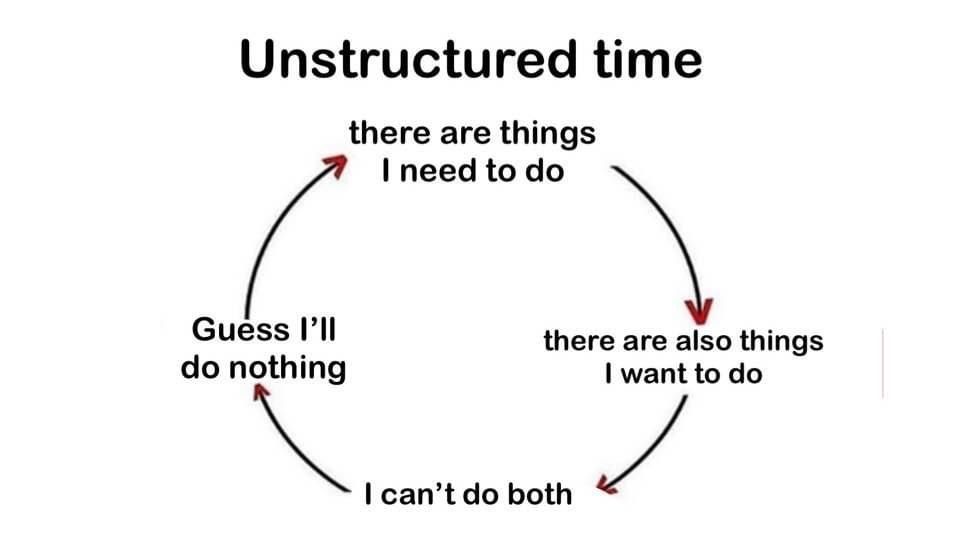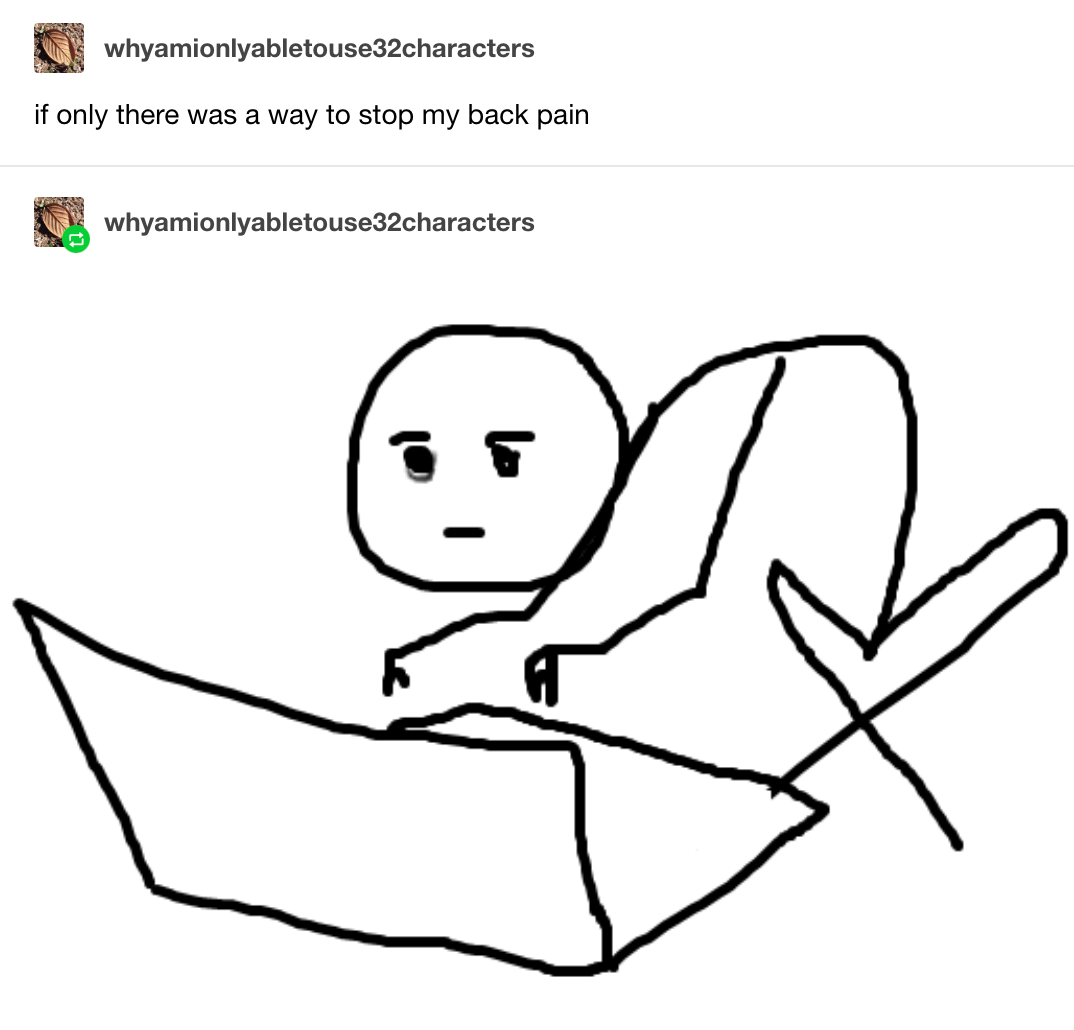Issue 49: In defense of constraints
In engineering, there is this concept of “timeboxing” as an approach to time and project management. (Sadly no, it does not relate to the TARDIS in any way.) As the name suggests, you set aside a fixed “box” of time in which to tackle a certain task. In my experience, this has been useful not only because it allows me to focus, but because it sets limits on things. Most often, I’ve timeboxed debugging or exploring technical options. It prevents me from going down rabbit holes, keeps me oriented to the actual goal, and makes it clear when I need to ask others for support.
Constraints are a natural part of engineering. We might be constrained by time, people, workflows, vendors, technologies, codebases, etc. As a result, tradeoffs are expected and accepted. For example, if we need to deliver a site migration in two months with only two engineers, we likely need to hack our existing infrastructure rather than architect an entirely new product. We prefer to ship early and often, even if things aren’t feature complete, so we can iterate and learn quicker.
It wasn’t until I read Oliver Burkeman’s Four Thousand Weeks that I came to a realization: I don’t approach my writing with this same kind of understanding and flexibility. Both engineering and writing involve drafts, collaboration, editing, and constant improvement. But I’m much harder on myself about utilizing my writing time “well.” This is partly because engineering is my full-time job and writing isn’t. But I also think it’s because constraints feel so antithetical to how I’ve thought about creativity—that it’s fluid and resists structure, that inspiration strikes randomly.
If it’s one thing I’ve learned about myself, it’s that if I have unstructured time, I’ll have a hard time getting anything done (see meme below). As a result, I’ve learned to embrace constraints. Two tangible time management techniques from Burkeman’s book have become instrumental in my writing process:
Fixed volume approach
First and foremost, Burkeman suggests limiting your works in progress. Rather than having an endless to-do list that only makes you feel worse, set a limit on the number of things you’ll focus on in a given timeframe. With the help of my accountability buddy, I like to set my writing intentions for the upcoming week.
Burkeman also advises that you focus on one big project at a time and see it to completion. You’ll get the satisfaction of actually finishing things (!!) while also getting better at tolerating anxiety. Although in the short term you might find it difficult to resist the allure of new ideas, in the long run it’ll help alleviate broader anxieties around your work as a whole. I also think it’s a good way to establish a rhythm to your writing, with the success of finishing giving you even more momentum to continue.
Radical incrementalism
Burkeman also recommends timeboxing, albeit under a different name. Not only does it help with focusing on actually getting the work done, it also helps you embrace “radical incrementalism,” the idea that small steps can add up over time to make radical progress.
One way this might look is setting a daily amount of writing time. The challenge is to stop when your daily time is up, even if you’re on a roll and feel like you could write a lot more. This strengthens your patience because you’ll learn how to show up for the project again and again. Although you don’t necessarily have to write literally every single day, radical incrementalism is all about sustaining your writing over an entire career.
I tried a version of this last year and I’m trying to get back to this incremental practice. I’ve told my partner to nudge me if I’m spending too much time on my daily Duolingo in an attempt at productive procrastination. I like putting on a Pomodoro timer and using that to timebox my writing. Even when I feel like my procrastination is veering off the rails, I remind myself I can focus for 25 minutes. It doesn’t have to take a lot. On average, my writing sessions are between 200-500 words. As a result, I feel less scared and less pressure when I return to my stories.
As the maxim goes, “Done is better than perfect.”


Creative resources
- Cinelle Barnes on how to know when to stop writing: “Who Writing is to me somehow feels easier to define than what writing is, maybe because with the work of personification, there is, for each of us, a particular someone to look at, to negotiate with. To leave. Also: someone to embrace.“
- I took this (virtual) romantic comedy writing workshop/bootcamp in February and loved it. They’re back with another round of rom com 101 and a new 201 offering this summer. Early bird registration ends May 1.
- A great dissection of the “show don’t tell” rule of writing by Lincoln Michel
- “Why Read Fiction in a Bad World?” by Morten Høi Jensen
- Early bird registration is open for Hedgebrook’s inaugural Writers Conference in September, a three-day (virtual) intensive for women-identified writers. Hedgebrook also offers fully-funded writing residencies—the next cycle opens mid-August for all genres of writing.
Recent reads & other media
I really enjoyed Fiona and Jane by Jean Chen Ho, a linked short story collection about the title characters’ friendship. I liked its focus on Asian American female friendship and how it depicted the ebb and flow of relationships over the course of a lifetime. In movies, E and I watched The Lost City—more studio rom coms please! It should also be noted that this is the second time Daniel Radcliffe has played an unhinged millionaire/tycoon (see—but don’t actually watch—the terrible magician thriller Now You See Me 2).
Note: Book links are connected to my Bookshop affiliate page. If you purchase a book from there, you'll be supporting my work and local independent bookstores!
~ meme myself and i ~
My new response to people commenting on my gray hairs. Karma at its finest. Trying to not look uncomfortable and weird while sitting on the ground with friends. Bold food choices. Introducing: YouTube While Eating. My favorite remixes of the sound this girl makes after accidentally backing into her bed frame.

